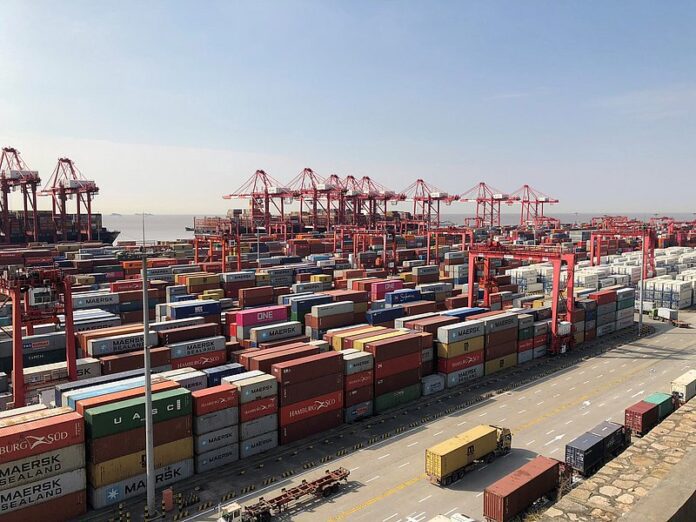-
Shanghai Port throughput grew a daily average of 7% m-o-m to log a 3.41 million TEU volume in May despite its recent lockdown
-
May growth signals strong recovery momentum for world’s largest container port
-
Shanghai’s loss by way of diverted cargo a boon to alternative port Ningbo Zhoushan
Shanghai port’s throughput grew a daily average of 7% in May from April despite working under a harsh COVID-related lockdown that closed most businesses and industries in the Chinese commercial hub until May 31.
The Port of Shanghai handled 3.41 million twenty-foot equivalent units (TEUs) in May. The port’s throughput growth indicated a strong recovery momentum for the world’s largest container port, Xinhua said, as it reported that China’s major ports handled over 23 million TEUs during the month, up 4.2% from a year ago. Xinhua was citing data from the Ministry of Transport.
The cargo throughput of major China ports monitored reached 1.03 billion tons, an average daily increase of 3.2% compared with April, the report said.
Xinhua said China has intensified efforts to coordinate epidemic control with waterway transportation and production, especially in areas such as the Yangtze River Delta and the Beijing-Tianjin-Hebei region.
While Shanghai Port at times during the lockdown operated only about 50% of its capacity due to movement restrictions for port workers and cargo trucks, it continued operating nonstop nevertheless under a closed-loop system to keep the supply chains running.
The Ministry of Transport said measures taken included ensuring round-the-clock operations at key ports, coordinating and unclogging waterway transportation, and promoting non-contact means with the help of technology.
China’s second-largest port, Ningbo Zhoushan Port in Zhejiang province, gained from the Shanghai lockdown through a series of unspecified measures it took in April to ensure a smooth operation of the logistics chain that turned it into an alternative port for urgent export cargo that manufacturers diverted from Shanghai.
The measures paid off that same month when Ningbo Zhoushan Port’s container throughput increased more than 10% year on year to a record high of over 3 million TEUs, according to another report on China Daily.
Citing the latest production data from the port, China Daily said the circulation of supply chains through Shanghai Port was affected by the lockdown, posing great difficulties to foreign trade companies in the Yangtze River Delta region.
To ease the pressure on foreign trade companies in the region and the Yangtze River Economic Belt, Ningbo Zhoushan Port launched the measures in April. This led to a container throughput of more than 3 million TEUs in April, up more than 10% year on year.
China Daily said one exporter that was grateful to Ningbo Zhoushan Port was bus maker Anhui Ankai Automobile Co Ltd, whose initial shipment of 70 buses to Mexico was diverted from Shanghai to Ningbo in early May, saving the bus builder from the risk of a default.
The report said the shipment was part of a Mexican order for 800 buses from Anhui Ankai that the manufacturer could not ship through Shanghai port due to the lockdown.
When the first 35 buses set off from Hefei on the morning of April 24, authorities in charge of traffic, public security and Customs in Ningbo all helped to ensure that the buses could be shipped through the port smoothly.
China Daily said green access was opened for the bus team. Drivers’ details had been recorded in advance and the buses drove straight into the port terminal without waiting. Exclusive access was also opened to enable the drivers to return to Hefei under the closed-loop management.
It took only 48 hours for the first batch of buses to arrive at Meixi Ro-Ro Terminal of Ningbo Zhoushan Port. The second group of 35 buses arrived on the morning of April 27. After fast clearance by Ningbo Customs, the buses drove onto the vehicle carrier Viking Adventure at Meixi terminal on May 5. Two days later, all 70 buses were on their voyage to Mexico.
Ningbo Zhoushan Port is on the eastern coast of China near Hangzhou Bay. From 2016 to 2020, the port had been the world’s third busiest port, with more than 28.72 million TEUs of throughput in 2020.






